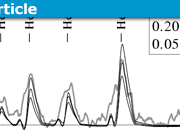What is Potential Energy? A 5 Minute Introduction
Table of Contents
Definition/Summary
Potential energy is simply another name for (minus) the work done by a conservative force.
Since the work-energy theorem states that change in energy minus work done is constant, that means that for a conservative force, energy plus potential energy is constant.
For example, a object of mass [itex]m[/itex] moving a height [itex]h[/itex] and distance [itex]s[/itex] along a curved path up a slope loses energy [itex]\int mg\,dh[/itex] because of the force of gravity and [itex]\int \mathbf{F}\cdot d\mathbf{s}[/itex] because of the force [itex]F[/itex] of friction. Gravity is conservative (while friction is not) and so the first integral may be replaced simply by [itex]mgh[/itex]
Potential energy is measured relative to an arbitrary level, which in each case may be taken to be whatever is most convenient (for example the starting level, or infinity).
Potential energy (commonly shortened to PE) is a scalar (an ordinary number), with the same dimensions as energy, [itex]ML^2/T^2[/itex], and is measured in the same units, joules ([itex]J[/itex]).
Equations
Work-energy theorem:
[tex]E\ -\ W\ =\ E\ -\ \int\mathbf{F}_{total}\cdot\mathbf{ds}\ =\ constant[/tex]
Conservative force (conservation-of-energy equation):
[tex]E\ +\ PE\ =\ constant[/tex]
Mixed forces:
[tex]E\ -\ W_{conservative}\ -\ W_{non-conservative}\ =\ E\ +\ PE\ -\ W_{non-conservative}\ =\ constant[/tex]
Gravitational potential energy (inverse-square-law field):
[tex]-mMG/r[/tex]
Gravitational potential energy (uniform field approximation, with [itex]g\ =\ MG/r_{earth}^2[/itex]):
[tex]mgh[/tex]
Elastic (spring) potential energy:
[tex]\frac{1}{2}kx^2[/tex]
Electric potential energy (or potential difference times charge or voltage times charge):
[tex]-\mathbf{E}\cdot\mathbf{d}\ =\ qV[/tex]
Magnetic potential energy (for magnetic moment [itex]\mathbf{\mu}[/itex]):
[tex]-\mathbf{B}\cdot\mathbf{\mu}[/tex]
Extended explanation
Is potential energy energy?
There is confusion over whether “energy” includes “potential energy”.
On the one hand, in the work-energy equation, potential energy is part of the work done.
On the other hand, in the conservation-of-energy equation (and conservation of course only applies to conservative forces), potential energy is part of the energy.
Potential is not the same as potential energy:
Electric potential (or electric potential difference or voltage) is confusingly so named since it is potential energy per charge.
Similarly, gravitational potential is potential energy per mass: [itex]-GM/r[/itex]
Unfortunately, the same letter [itex]\mathbf{F}[/itex] is often used for both “field” and “force”, which obscures the fact that (for an “inline” field) the force vector equals the field vector times a charge (for example, electric charge or mass).
Generally, the potential of a vector field [itex]\mathbf{F}_{field}[/itex] is a scalar function [itex]U[/itex] such that [itex]\mathbf{F}_{field}\ = \ -\mathbf{\nabla}U[/itex]. So the potential energy is potential times charge:
[tex]-\int\mathbf{F}_{force}\cdot\mathbf{ds}\ = -\ q\int\mathbf{F}_{field}\cdot\mathbf{ds}\ = \ q\int (\mathbf{\nabla}U)\cdot\mathbf{ds}\ =\ q\int\frac{\partial U}{\partial s}ds\ =\ qU[/tex]
Potential energy is relative:
Only the change in potential energy matters, and so an arbitrary constant may be added.
In other words: an arbitrary reference position is chosen, and potential energy is measured as the change from that position.
For example, an attractive inverse-square-law force has [itex]PE\ =\ -mC/r + mC/r_0[/itex], where the reference position is at [itex]r\ =\ r_0[/itex], but the arithmetic is much simpler if [itex]r_0\ =\ \infty[/itex], giving:
[tex]PE\ =\ -mC/r[/tex]
However, for the usual uniform gravitational field on Earth, the reference position is usually chosen to be either the initial height or the height at which the velocity is zero.
For elastic potential energy, the reference position is usually chosen to be the position of zero displacement.
Derivation of mgh:
[tex]\Delta (PE)\ =\ \Delta(-mMG/r)[/tex]
[tex]=\ \frac{-mMG}{r_{earth}\,+\,H\,+\,h}\ -\ \frac{-mMG}{r_{earth}\,+\,H}[/tex]
which is approximately:
[tex]\frac{-mMG(H\,-H\,-\,h)}{r_{earth}^2}\ =\ \frac{mMGh}{r_{earth}^2}\ =\ mgh[/tex]
This article was authored by several Physics Forums members with PhDs in physics or mathematics.










Leave a Reply
Want to join the discussion?Feel free to contribute!